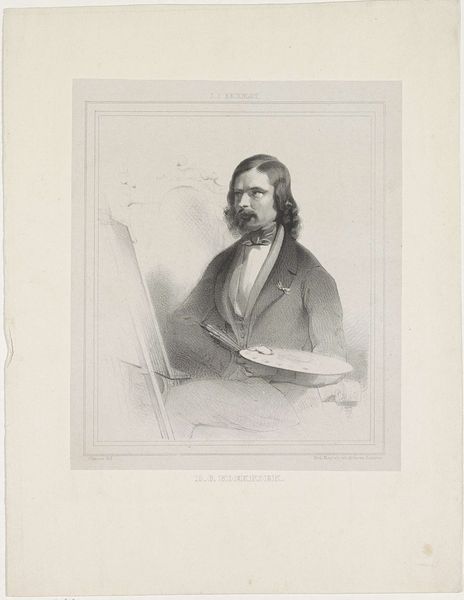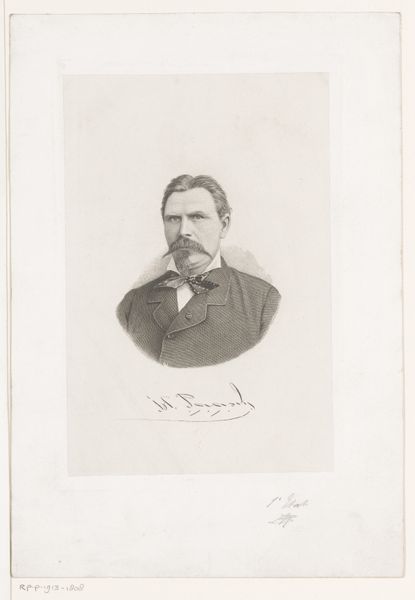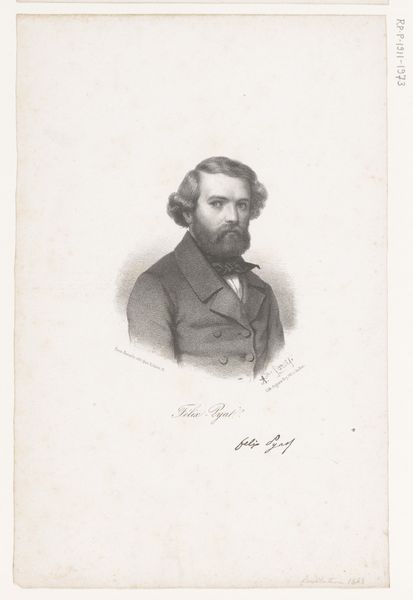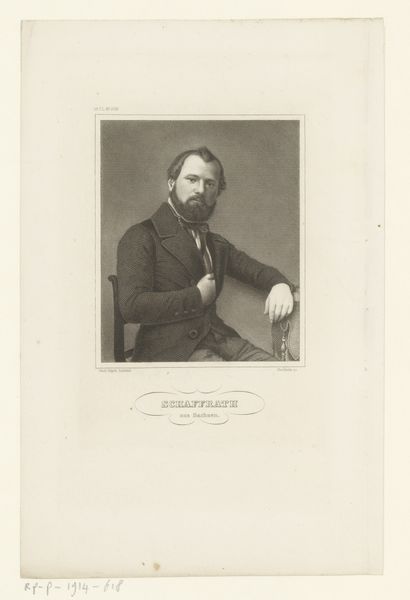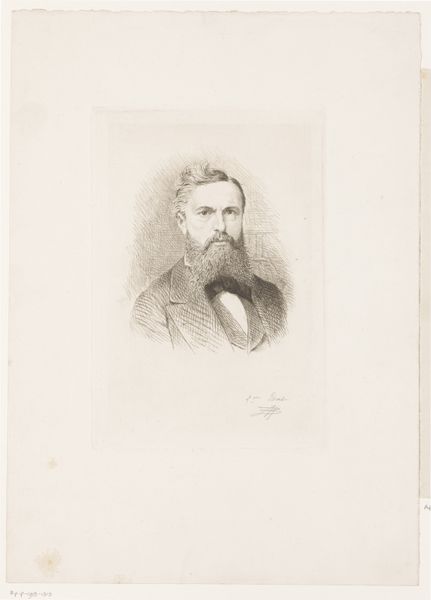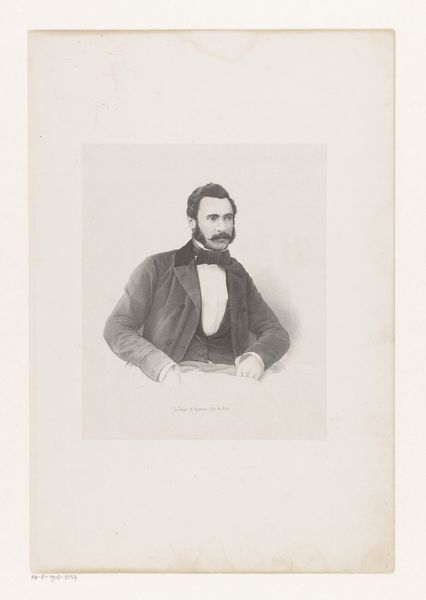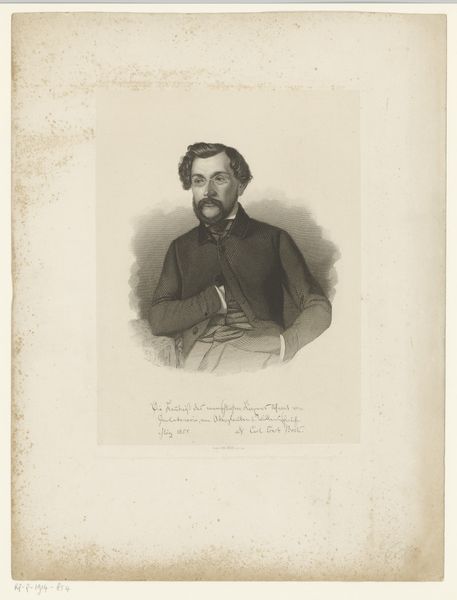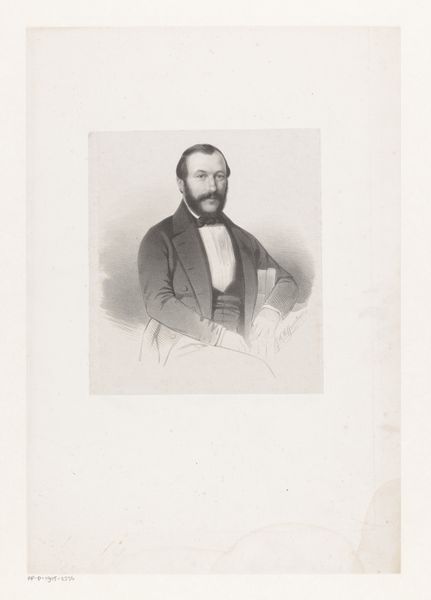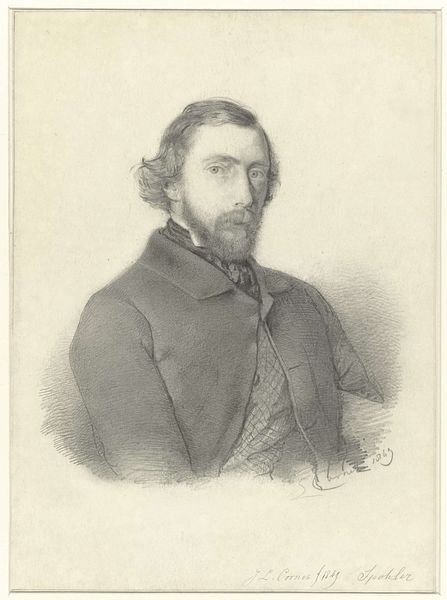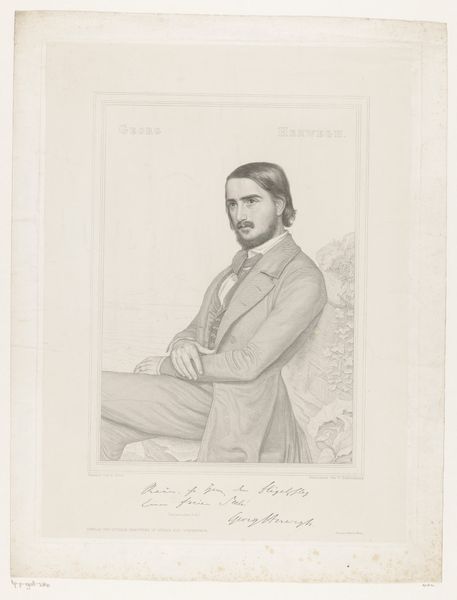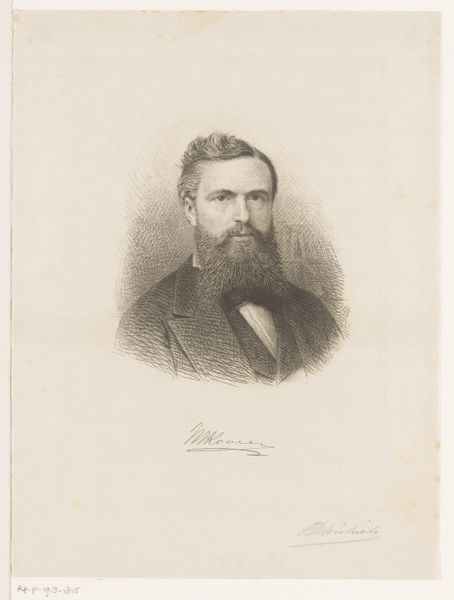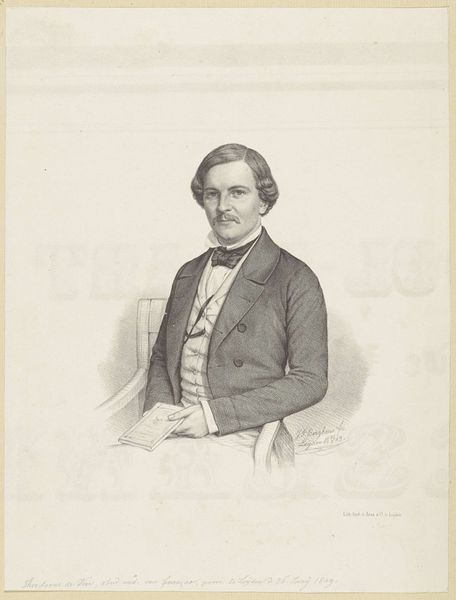
Portret van de schrijver en journalist Joseph Méry 1841 - 1850
0:00
0:00
drawing, pencil
#
portrait
#
pencil drawn
#
drawing
#
pencil drawing
#
romanticism
#
pencil
#
portrait drawing
#
realism
Dimensions: height 347 mm, width 221 mm
Copyright: Rijks Museum: Open Domain
Editor: So this is Marie-Alexandre Alophe's "Portret van de schrijver en journalist Joseph Méry," a pencil drawing dating from between 1841 and 1850. I'm struck by its stillness. He looks composed, but a bit melancholic. What symbols or stories do you see embedded in this image? Curator: I am immediately drawn to the deliberate symbolism within this seemingly straightforward portrait. Notice the slight disarray of his hair, juxtaposed against the crisp lines of his jacket. Doesn’t that tell us about the Romantic era's fascination with the tormented artist? The drape, how does it affect the subject? Editor: Good point about the drape. It feels both luxurious and… protective, almost as if shielding him. Curator: Precisely! Drapes in portraiture often symbolized status and authority, yet here, draped loosely over his shoulder, it almost feels like a cloak of artistic vulnerability. Is the background merely decoration, or can it tell us something about Méry? Editor: Hmm, I'm not sure. It looks vague, almost unfinished, which does feed into the sense of artistic struggle perhaps? Curator: Exactly! Consider too that the work exists as a print; therefore, it existed to be disseminated widely, but how would it be perceived across different social strata? It becomes both intimate and public at once. What does the symbol of the pencil add? Editor: That's fascinating, viewing it as an intentional piece of public imagery. For me, the pencil connects the art to a much broader reading public, emphasizing Méry's importance as an author of literary and political weight. Curator: Indeed. Visual symbols constantly renegotiate cultural memory. We began by interpreting feelings through the posture and props, but context shifted as we discovered the print's political intention. Editor: I didn’t expect such depth from what seemed like a simple portrait. Curator: And I trust it serves to illuminate how cultural identity and individual expression intersect in visual representation, continuing to this very day!
Comments
No comments
Be the first to comment and join the conversation on the ultimate creative platform.
